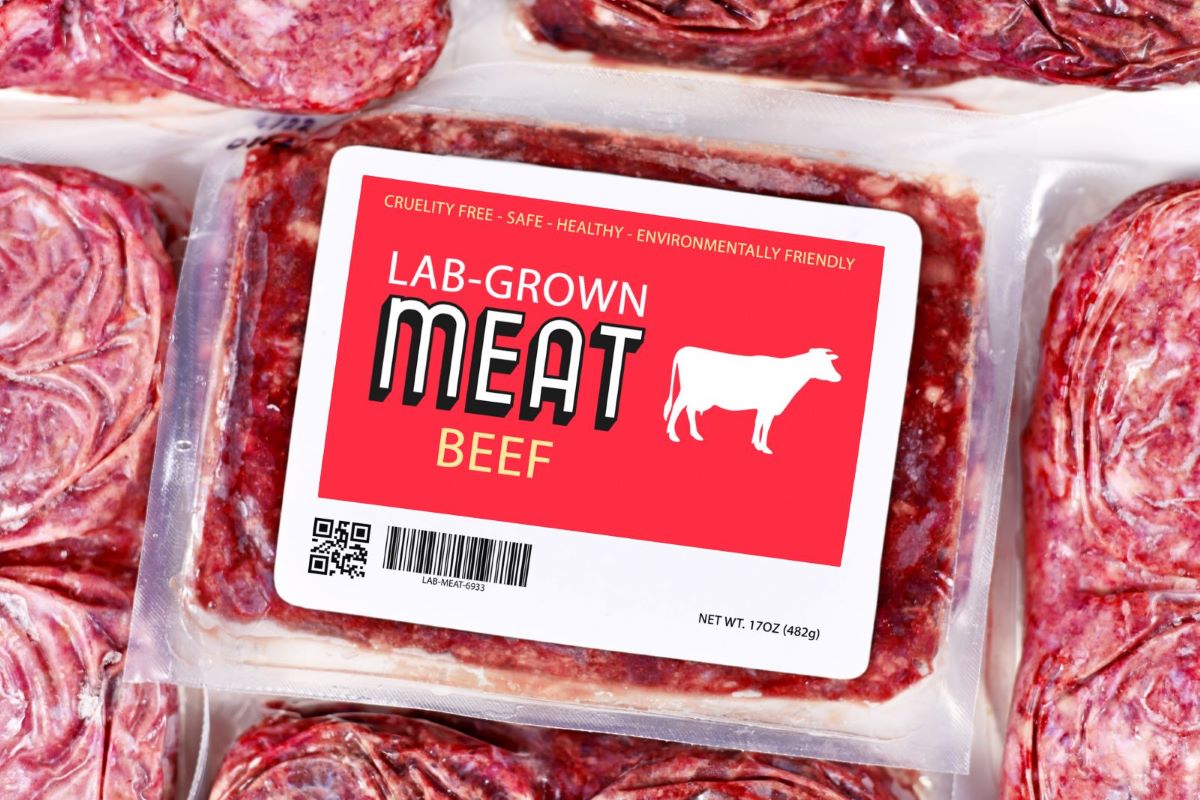Lab-grown meat sounds like something out of a sci-fi movie, but it’s becoming a reality. Initially, I was skeptical about this new technology, but the potential benefits are hard to ignore. Curious about how lab-grown meat could reshape our diets and the world?
1. What Is Lab-Grown Meat?

Lab-grown meat, or cultured meat, is produced by cultivating animal cells in a controlled environment. It doesn’t require raising and slaughtering animals, which immediately intrigued me as a more humane option.
2. Reducing Animal Suffering

Lab-grown meat eliminates the need for animal slaughter. This could significantly reduce animal suffering and promote more ethical consumption, something that deeply resonated with my desire to make kinder choices.
3. Environmental Benefits

Traditional livestock farming is a major contributor to greenhouse gas emissions. Lab-grown meat has the potential to reduce these emissions by up to 96%, according to some studies, which is a huge win for the environment.
4. Resource Efficiency

Producing lab-grown meat requires less land and water compared to conventional meat. This makes it a more sustainable option for a growing population, addressing my concerns about our planet’s future.
5. Healthier Meat

Lab-grown meat can be engineered to contain fewer antibiotics and hormones. It offers a healthier alternative to conventional meat products, aligning with my goal to provide better nutrition for my family.
6. Tackling Food Security

As global demand for meat increases, lab-grown meat could help meet this demand. It provides a reliable food source that isn’t affected by issues like disease outbreaks in livestock, offering peace of mind about future food availability.
7. Overcoming Skepticism

Many people, including myself, were initially skeptical about lab-grown meat. However, advances in technology and positive environmental impacts are changing minds, including my own.
8. Taste and Texture

Early versions of lab-grown meat faced criticism for their taste and texture. Recent developments have significantly improved these aspects, making it comparable to traditional meat, which pleasantly surprised me.
9. Reducing Antibiotic Resistance

The overuse of antibiotics in livestock farming contributes to antibiotic resistance. Lab-grown meat production can be antibiotic-free, helping combat this global health issue and making me feel more secure about what I’m feeding my family.
10. Cost Reduction

Initially, lab-grown meat was incredibly expensive. With advancements in technology, the cost is decreasing, making it more accessible to the average consumer, which is great news for budget-conscious families like mine.
11. Market Availability

Lab-grown meat is slowly entering the market. Some restaurants and specialty stores already offer it, and wider availability is expected in the coming years, making it easier to try and integrate into our diets.
12. Regulatory Challenges

Regulatory bodies are still developing frameworks for lab-grown meat. Ensuring safety and proper labeling is crucial for consumer acceptance, and I’m hopeful these measures will build trust.
13. Public Perception

Educating the public about lab-grown meat is essential. Clear communication about its benefits and safety can help overcome resistance, much like it did for me.
14. Impact on Traditional Farming

Lab-grown meat could disrupt traditional farming practices. This might lead to economic shifts, particularly in regions reliant on livestock farming, raising questions about how we support these communities.
15. Nutritional Customization

Lab-grown meat can be tailored to enhance nutritional content. This could lead to meat products that are better for human health, offering personalized nutrition that’s exciting to consider.
16. Reducing Foodborne Illnesses

Lab-grown meat is produced in a sterile environment, reducing the risk of contamination. This could lead to fewer foodborne illnesses, providing an additional layer of safety for my family.
17. Economic Opportunities

The rise of lab-grown meat could create new economic opportunities. It could lead to job creation in biotech and food science sectors, fostering innovation and growth.
18. Ethical Considerations

The ethics of lab-grown meat production are complex. While it reduces animal suffering, there are debates about the implications of creating life in a lab, prompting me to reflect deeply on what I value in food production.
19. Personal Experimentation

Trying lab-grown meat for the first time was an eye-opener. It tasted surprisingly similar to traditional meat and made me consider the broader impacts of my food choices, reinforcing my commitment to ethical consumption.
20. Supporting Innovation

Embracing lab-grown meat supports innovation in food production. It’s a step towards more sustainable and ethical eating practices, aligning with my values and hopes for the future.
21. A Sustainable Future

Lab-grown meat could play a significant role in creating a sustainable food system. Are you ready to explore this innovative option and contribute to a greener future?
Ready to Make the Switch?

Lab-grown meat offers a promising alternative that addresses ethical, environmental, and health concerns. Are you ready to join me in supporting this revolutionary approach to our food system?
Timeless Taste: 20 Boomer Superfoods That Are Making a Comeback

Discover the forgotten superfoods of the boomer generation! From liver to sardines, these nutritional powerhouses are making a comeback. Join us as we rediscover these classic ingredients and their health benefits. Let’s dive into the world of boomer superfoods together! Timeless Taste: 20 Boomer Superfoods That Are Making a Comeback
21 Everyday Grocery Items That Are Loaded With Chemicals

Grocery shopping can seem like a science experiment, with many products packed with artificial additives instead of nutrients. While convenient and tempting, have you considered what’s really in these items? 21 Everyday Grocery Items That Are Loaded With Chemicals
18 Must-Eat Foods for a Longer Life

In the quest for a longer life, certain foods can make a big difference. From everyday staples to exotic finds, these options span various budgets and might surprise you. Who knew the secret to longevity could be right in your pantry or at the grocery store? 18 Must-Eat Foods for a Longer Life
Featured Image Credit: Shutterstock / Firn.
For transparency, this content was partly developed with AI assistance and carefully curated by an experienced editor to be informative and ensure accuracy.

